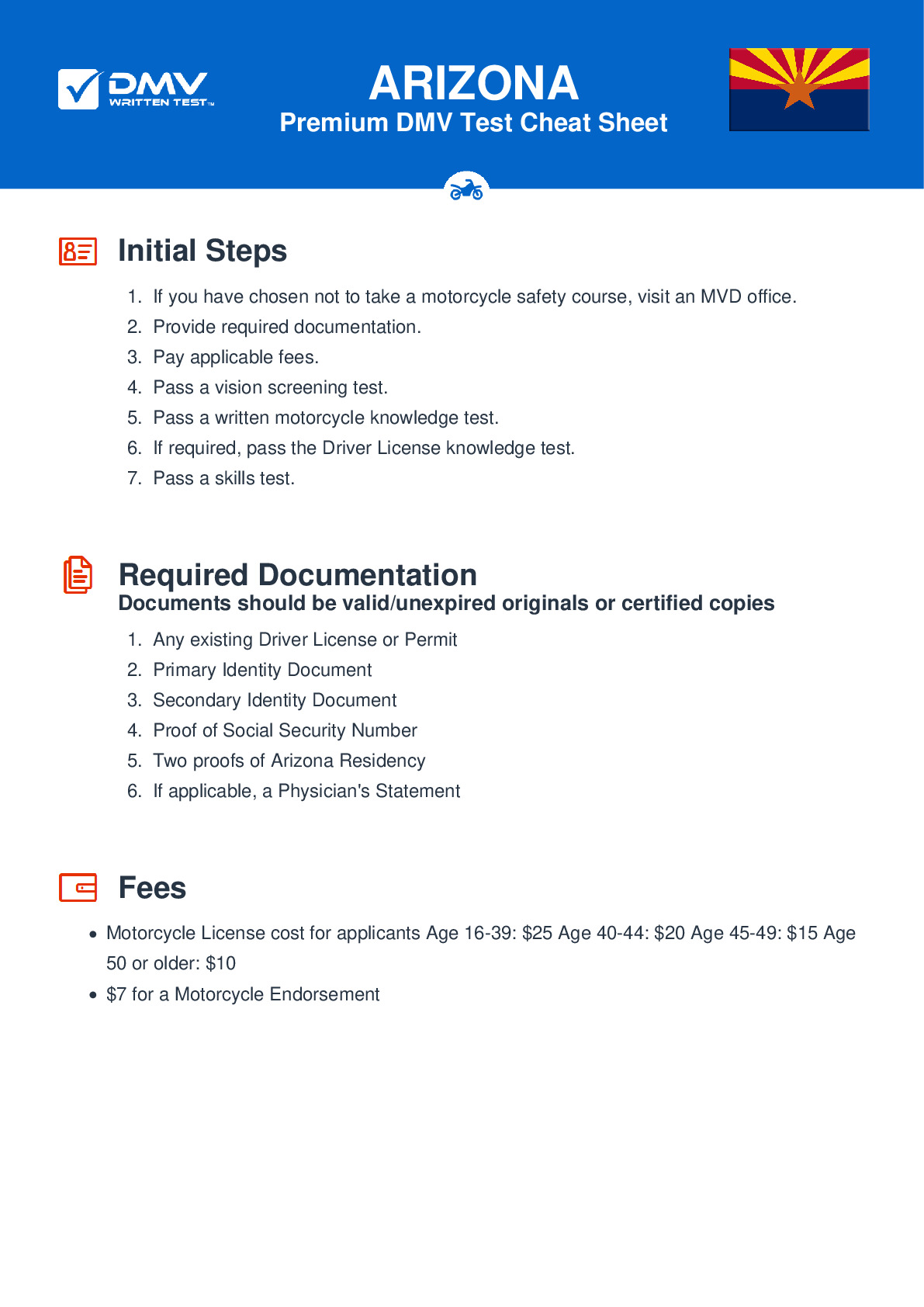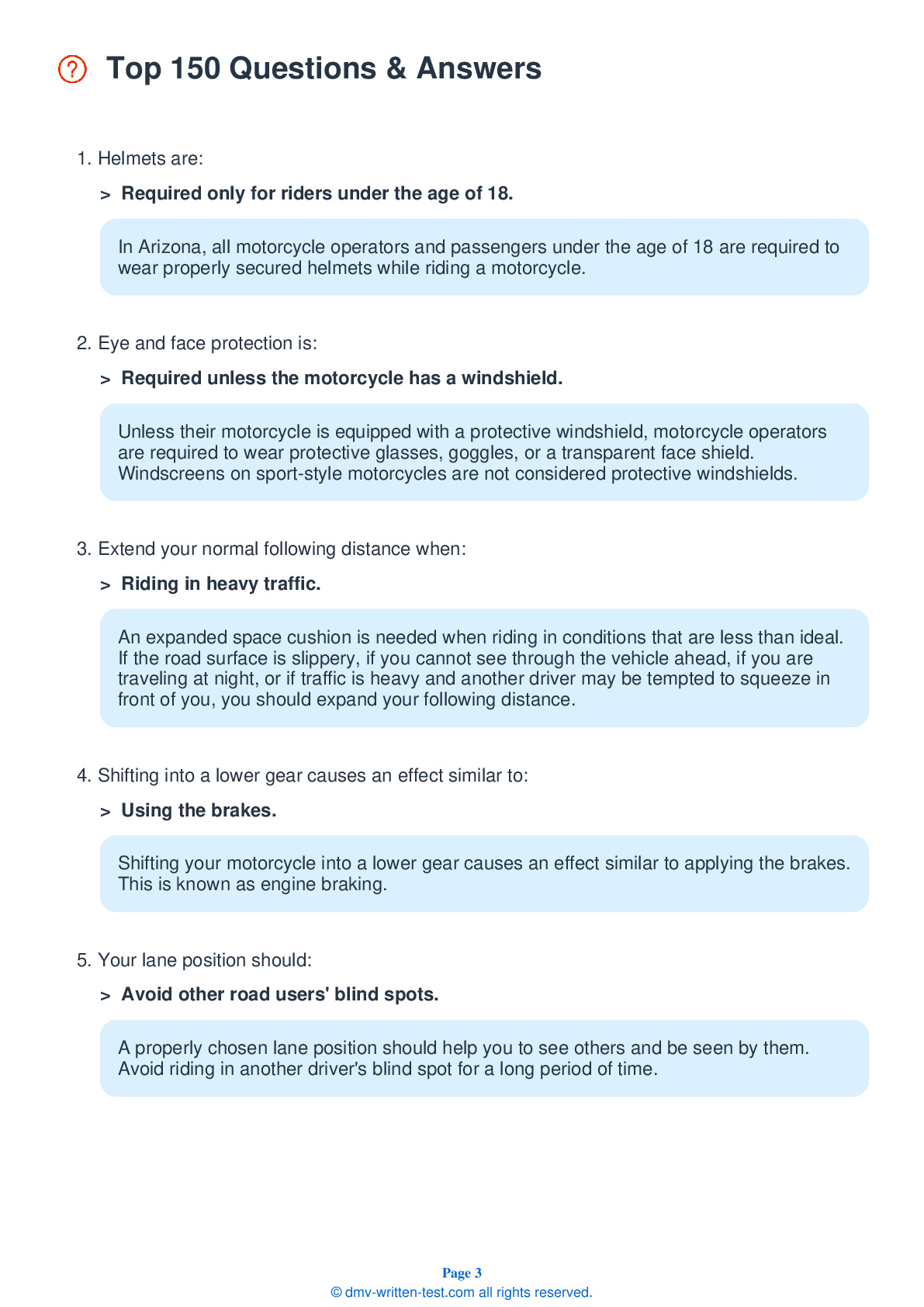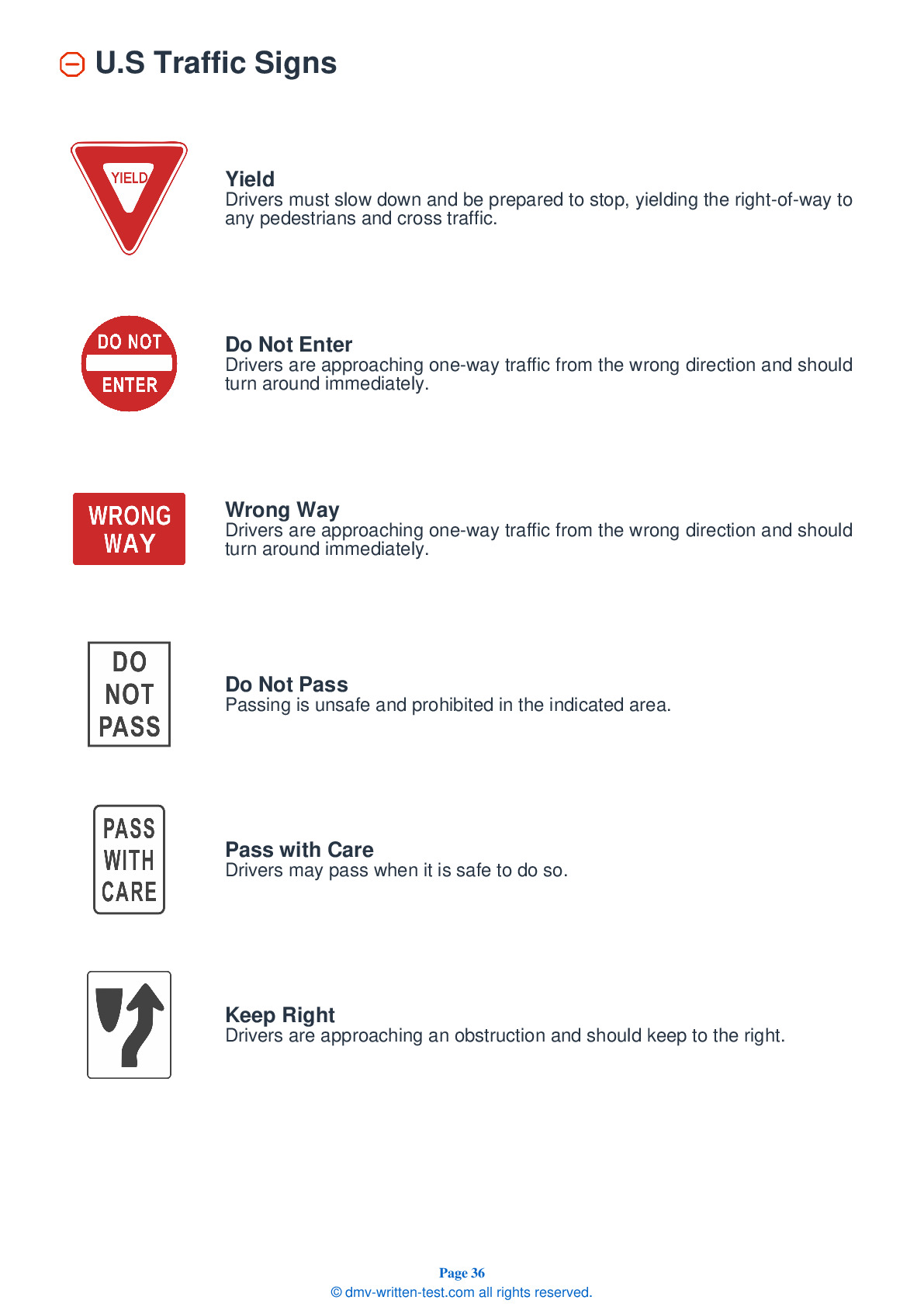2025 Arizona Motorcycle Permit Test 16
The following questions are from real DMV written motorcycle permit tests. These are some of the actual permit questions you will face in Arizona when getting your motorcycle learners permit. Each motorcycle theory practice test question has three answer choices. Select one answer for each question and select "grade this section." You can find this button at the bottom of the drivers license quiz. For a complete list of questions and answers for Arizona please visit https://cheat-sheets.dmv-written-test.com/en/arizona/motorcycle.
Number of Tests
Number of Question
Passing Score
9. The middle portion of the lane usually contains an oily strip. You should:
Explanation
Oily drippings from cars and trucks build up in the center of each lane. Unless the road is wet, this strip usually still provides enough traction more a motorcycle to operate safely. The strip is generally narrow enough that you can ride to either side of it and still be in the center portion of the lane.
10. If your front wheel begins to skid, you should:
Explanation
If your front wheel locks while braking, you should release the front brake immediately and completely before re-applying it smoothly.
11. Swerving a motorcycle:
Explanation
Swerving is a quick maneuver that requires a lot of traction in order to be safely executed. Making sudden moves, such as swerving, on slippery surfaces should be avoided.
12. Helmets are:
Explanation
In Arizona, all motorcycle operators and passengers under the age of 18 are required to wear properly secured helmets while riding a motorcycle.
13. When riding a three-wheeled motorcycle through a curve, it is best to:
Explanation
The cornering characteristics of a three-wheeled motorcycle or a motorcycle with a sidecar differ from those of a two-wheeled motorcycle. The best path for a three-wheeler to take through a curve may not actually follow the curve. For example, you may need to move from the outside of the curve to the inside of the curve before straightening out your path.
14. When braking on a slippery surface, you should:
Explanation
To ride safely on a slippery surface, you should reduce your speed and avoid making sudden moves. Use both brakes if you must slow down or stop.
15. If attempting to brake in a curve, you should:
Explanation
Because tires have less traction when a motorcycle is leaning than when it is upright, always try to position your motorcycle in an upright position before braking. If you must brake while in a curve, apply the brakes more smoothly and gradually than if your motorcycle was traveling on a straightaway.
16. If taking a long trip, you should:
Explanation




